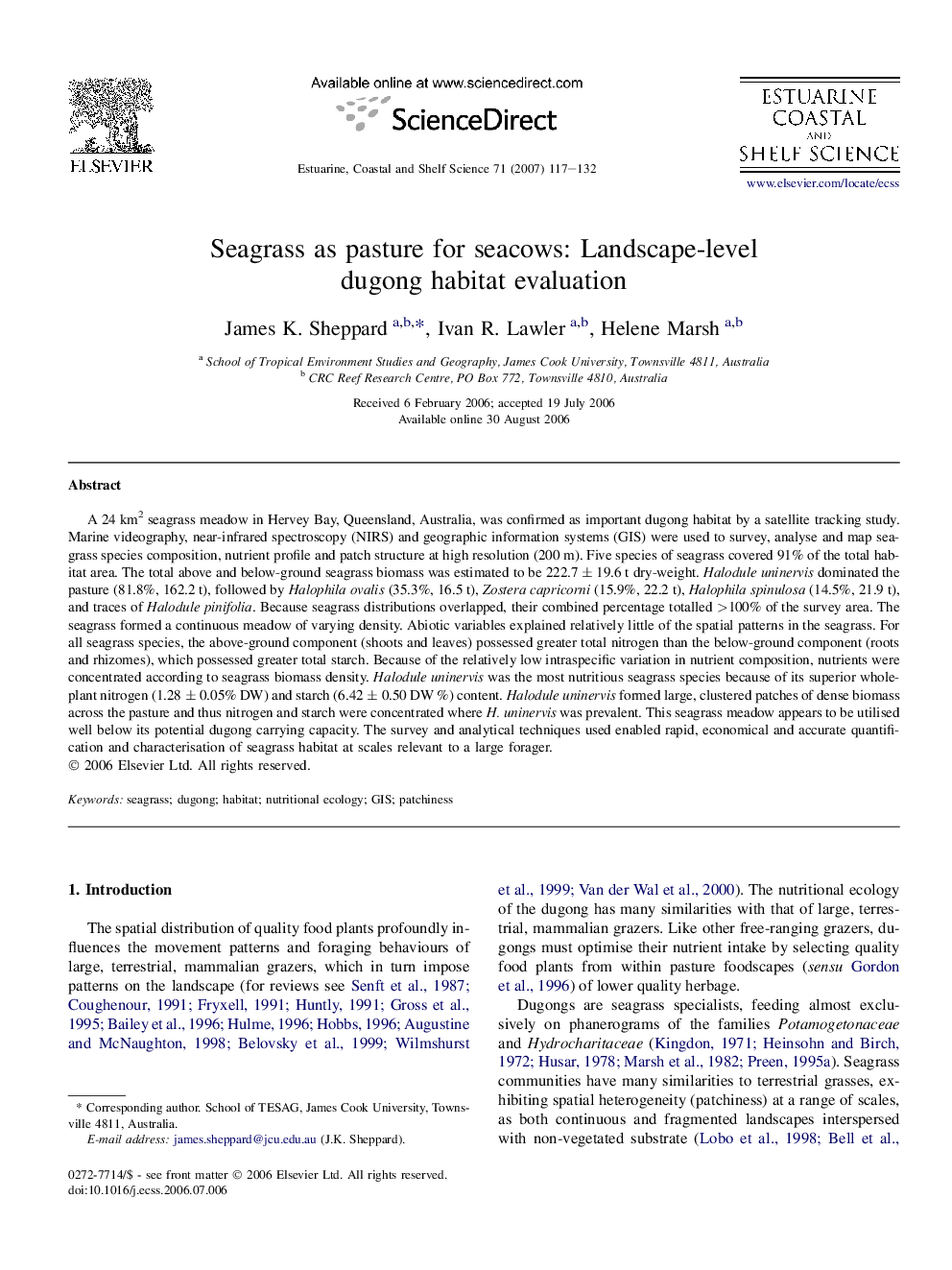| کد مقاله | کد نشریه | سال انتشار | مقاله انگلیسی | نسخه تمام متن |
|---|---|---|---|---|
| 4542054 | 1626707 | 2007 | 16 صفحه PDF | دانلود رایگان |

A 24 km2 seagrass meadow in Hervey Bay, Queensland, Australia, was confirmed as important dugong habitat by a satellite tracking study. Marine videography, near-infrared spectroscopy (NIRS) and geographic information systems (GIS) were used to survey, analyse and map seagrass species composition, nutrient profile and patch structure at high resolution (200 m). Five species of seagrass covered 91% of the total habitat area. The total above and below-ground seagrass biomass was estimated to be 222.7 ± 19.6 t dry-weight. Halodule uninervis dominated the pasture (81.8%, 162.2 t), followed by Halophila ovalis (35.3%, 16.5 t), Zostera capricorni (15.9%, 22.2 t), Halophila spinulosa (14.5%, 21.9 t), and traces of Halodule pinifolia. Because seagrass distributions overlapped, their combined percentage totalled >100% of the survey area. The seagrass formed a continuous meadow of varying density. Abiotic variables explained relatively little of the spatial patterns in the seagrass. For all seagrass species, the above-ground component (shoots and leaves) possessed greater total nitrogen than the below-ground component (roots and rhizomes), which possessed greater total starch. Because of the relatively low intraspecific variation in nutrient composition, nutrients were concentrated according to seagrass biomass density. Halodule uninervis was the most nutritious seagrass species because of its superior whole-plant nitrogen (1.28 ± 0.05% DW) and starch (6.42 ± 0.50 DW %) content. Halodule uninervis formed large, clustered patches of dense biomass across the pasture and thus nitrogen and starch were concentrated where H. uninervis was prevalent. This seagrass meadow appears to be utilised well below its potential dugong carrying capacity. The survey and analytical techniques used enabled rapid, economical and accurate quantification and characterisation of seagrass habitat at scales relevant to a large forager.
Journal: Estuarine, Coastal and Shelf Science - Volume 71, Issues 1–2, January 2007, Pages 117–132